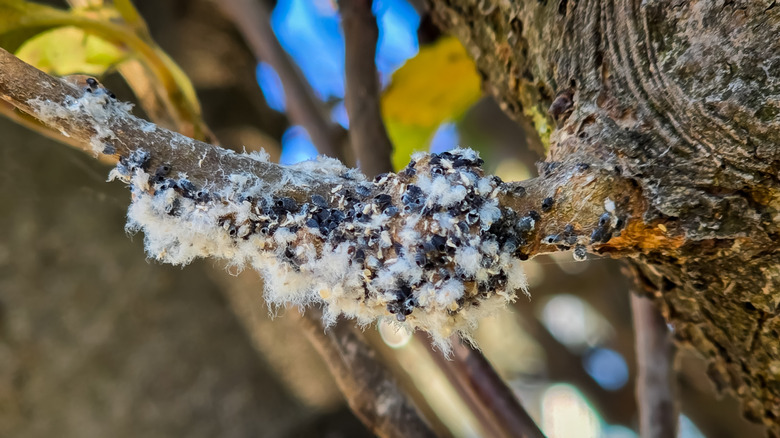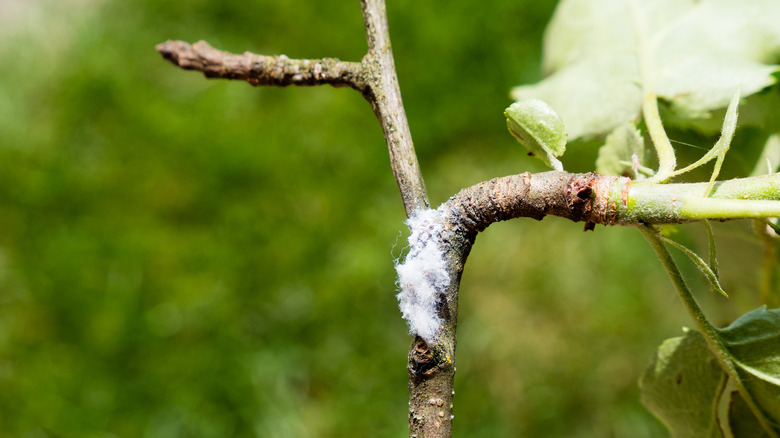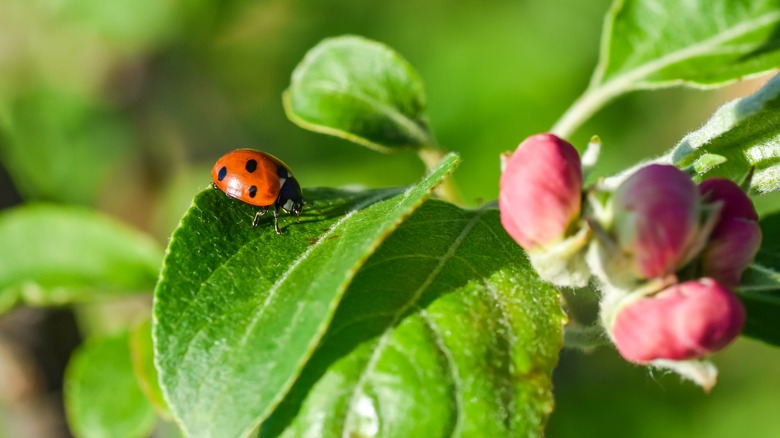How Woolly Aphids Differ From Other Varieties (& Why It Matters For Your Plants)
See that white, fuzzy stuff on your trees or shrubs? It is easy to confuse it with fungus or mold, but it could also be woolly aphids taking over your garden. Also known as blue fuzzy butts, these sap-sucking bugs are easily distinguishable from other aphids because of their white, fluffy, waxy body coat that resembles wool. They are most noticeable on plants between spring and early autumn. Compared to other aphids, they have small antennae, typically less than one-third of their body length. In addition, unlike most aphids that feed on tender leaves and shoots, woolly aphids feed on woody tissues, including twigs, pruning wounds, roots, and leaf axils.
As a result, the plants may get weak, develop shriveled twigs, and you might even spot swollen root galls. In smaller plants, the damage from woolly aphids can even lead to death. In addition, the toxin in their saliva can interfere with normal plant growth and deform leaves and fruit. And the problems don't just end here. Woolly aphids, after feeding on plant sap, release honeydew. This, in turn, can attract ants, wasps, and mold to the infested plant, causing even more damage.
In orchards, heavy woolly aphid infestations can lower fruit quality — making harvesting and even selling the fruit difficult. Furthermore, some woolly aphid species feed underground and could stay hidden from your eyesight. This could lead to an unidentified decline in the plant's health, which is hard to pinpoint and treat.
Woolly Aphid Varieties and Their Host Trees
Woolly aphids are not a single species but, in fact, are a group of closely related ones that all look very similar to each other. Examples include the woolly alder aphid, beech blight aphid, woolly elm bark aphid, woolly elm aphid, and woolly apple aphid. Besides the types of trees they attack, each species of woolly aphid also has some unique behaviors. These behaviors, along with their biology, can help tell them apart. For instance, woolly apple aphids typically overwinter as immature forms, mostly on the roots. But, as the weather warms, they move up the tree and form visible colonies.
However, they can also attack pear, hawthorn, mountain ash, and elm. In contrast, the woolly beach aphid lives almost its entire life on the beach tree, usually on the underside of the leaves. They are pale-yellowish or green in color and often cause the leaves to curl downward on either side of the midrib, forming a distinct, gall-like shape. And then there are woolly oak aphids. As the name suggests, they affect oak trees, but their damage is mostly aesthetic and rarely affects a tree's health.
Recognizing them is easy, as they produce huge quantities of woolly wax and can be seen beneath all that wool with their pale bodies and very actively moving nymphs. Lastly, there are woolly ash aphids. These tiny gnats can often be seen swarming in the evenings and can be quite a nuisance. Their primary host is the ash tree, but they also spend part of their lives on their secondary host, the fir tree, where they usually hang around the roots.
Controlling woolly aphids on plants
Spotting woolly aphids early and identifying them correctly on susceptible host plants can save you a lot of trouble and help you minimize the risk of honeydew-related damage. Nevertheless, if you are a fan of natural pest control in your yard or garden, just grab a hose and blast the aphids off with a strong spray. You can also trim away any parts that are heavily infested. Biological control is yet another natural control option, which involves fostering populations of beneficial insects and predators of woolly aphids. Parasitic wasps, ladybirds, and European earwigs are all natural predators of woolly aphids and can help stop and prevent damaging infestations.
There are a number of flowers you can plant to attract these beneficial insects to the garden. When it comes to using chemical insecticides, in most cases, it is not needed, especially when the trees are large or well-established. However, at times, when it is needed, your only option is systemic insecticides. The reason is that woolly aphids, like other aphids, are not affected by horticultural oils and soaps. The waxy coating they produce over their bodies prevents most chemical compounds from making direct contact.
This is exactly why most of the contact pesticides will also not work on them. So, you will need to resort to imidacloprid and dinotefuran, two commonly used systemic pesticides. However, you need to be careful with their use, as they are very toxic to pollinators and should ideally be used after the blooming period of the plant.


